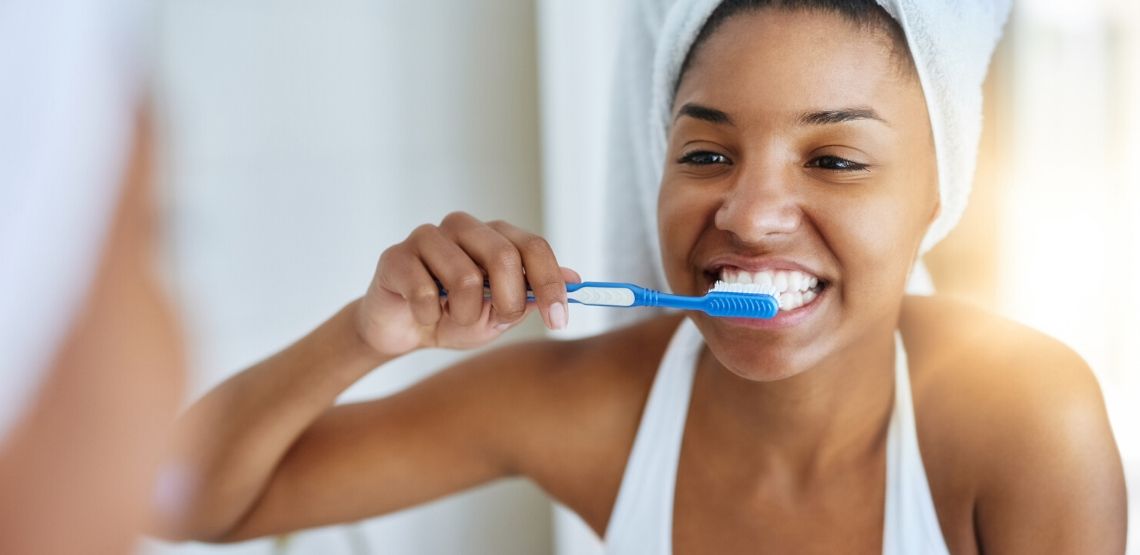How to Whiten Your Teeth
Having a nice white smile starts with proper dental hygiene. Taking care of your teeth and gums is essential; brushing, flossing, and using mouth wash and different probiotics all contribute to healthy teeth.
While some people are born with yellow teeth, others stain and discolor their teeth because of extrinsic factors. After this, you will be able to understand how at-home, professional and over the counter teeth whitening methods work, and the secrets to the best teeth whitening tips.
What Causes Yellow Teeth and Stains?
Discoloration or surface stains can be caused by:
- Coffee, red wine, tea, dark berries or soda
- Chewing tobacco or smoking
- Accumulation of plaque and tartar
- Medical conditions like dry mouth and blocked nasal passage
Intrinsic stains are caused by:
- Aging
- Tooth trauma
- Certain medicines like tetracycline
- Excessive fluoride intake during teeth forming stage (from birth to age 16)
Teeth Whitening Methods
When considering whitening, it is important to find the best whitening method depending on the condition of your teeth and the kind of results you wish to achieve. While most of the surface stains can be removed by over the counter teeth whitening products and following natural remedies to whiten your teeth, internal stains need professional care. Also, if you have stubborn stains, which have been present for years, then you need professional whitening to remove those stains and discolorations.
At-Home Remedies for Teeth Whitening
A wide variety of teeth whitening toothpaste and wildly popular whitening kits and strips are available, but some people look back at home remedies to whiten their teeth. Let’s discuss these natural remedies and learn how effective they are at whitening your teeth.
Oil Pulling
It is the process of swishing oil in the mouth for 15 to 20 minutes to benefit oral health. The American Dental Association does not support oil pulling as an effective approach to teeth whitening. However, the antibacterial properties of coconut oil make it a safe and preventive therapy for oral health.
Baking Soda
Many toothpastes use baking soda as a constituent to achieve whitening. A study shows how a toothpaste containing baking soda is more effective at stain removal than toothpaste without baking soda. The abrasive action of baking soda scrubs away stains. Furthermore, its alkaline nature creates an unfavorable environment for bacterial growth and maintains the health of your gums and teeth.
Hydrogen Peroxide
It’s a bleaching agent and is found in many commercial teeth whitening products. Peroxide can penetrate the layers of teeth to break down the compounds that cause discoloration and staining.
Peroxide mouthwash is effective against minor tooth discoloration and shows its effect after a few weeks. Alternatively, a simple paste of hydrogen peroxide and baking soda can help brighten your teeth.
Over the Counter Treatments
Over the counter teeth whitening products come with a variety of options. If home remedies are not effective for you, then you can switch to this professional yet portable option. It is not recommended to use any tooth whitening product if you are pregnant or breastfeeding. To ensure safe and effective teeth whitening, we recommend using products that have the ADA seal of acceptance (a voluntary program for products that are available without a prescription).
Related Search Topics (Ads)
Whitening Strips
Teeth whitening strips are a quick, easy and inexpensive way to boost your smile. These flexible plastic strips are coated with a thin layer of peroxide and a baking soda-based gel.
Dentists suggest that hydrogen peroxide and carbamide peroxide-based teeth whitening products are safe and effective as long as the manufacturer’s instructions are followed. They further add that users must be informed to exercise caution as these products might lead to tooth sensitivity.
Below are some of the ADA approved whitening strips we recommend:
- Crest 3D White Whitestrips. With hydrogen peroxide as one of the active ingredients, Crest claims to remove 10 years of tooth stains.
- Crest 3D Whitestrips Classic Vivid. This is also a peroxide-based whitening strip that claims to remove five years of set-in stains.
- Crest 3D Whitestrips Gentle. This is specially formulated for sensitive teeth.
Whitening Toothpaste
Whitening toothpaste primarily relies on abrasive action to remove stains. These products are not designed to bleach your teeth. Some of the ADA approved whitening toothpaste we recommend are:
- Colgate Total Advanced Fresh + Whitening Gel Toothpaste. It is a fluoride-containing toothpaste that helps to reduce surface stains.
- Crest Gum & Enamel Repair . It contains stannous fluoride which can penetrate tooth layers to remineralize the weakened enamel.
- Tom's of Maine Simply White Clean Mint Toothpaste . It contains sodium fluoride and peppermint oil and is even suitable for children ages two years and older.
Professional Teeth Whitening
If over the counter treatments do not give you the desired results or if you want quick and reliable results, you can opt for professional teeth whitening. Professional bleaching can be done either in a dental clinic or at home. Both these methods use peroxide-based gels to breakdown stains.
At-Home Whitening Kits
In-office teeth whitening procedures are costly, hence, many people are turning to at-home teeth whitening kits. These kits are recommended by the American Academy of Cosmetic Dentistry (AACD). Your dentist provides you a custom-fit that you have to fill with the provided whitening gel. This procedure is performed for up to two hours daily for two weeks. Some brands can be worn overnight. After this, a follow-up appointment is made to compare the results with your reference shade. Under the supervision of your dentist, the at-home kit is an effective way to bleach your teeth.
In-Office Whitening
It is a more expensive and less frequent procedure that delivers optimal results in a shorter time. The process involves:
- Teeth cleaning and polishing to remove plaque
- Teeth isolation using rubber or a gum shield
- Application of bleaching solution to your teeth
- Sometimes a special light is used to activate the whitening agent
- The solution is left for 30 to 60 minutes or reapplied, depending on the brand or desired results
Strategies to Prevent Damage to Your Teeth
While exploring the various options to retain or restore your sparkling shine, you must follow certain strategies to experience a safe whitening routine. Here are some oral health tips:
- Follow a proper oral hygiene routine and use a soft bristle brush
- Never use lemon juice, citric acid or apple cider vinegar to whiten your teeth. The low pH of acidic juices and fruits leach out calcium from tooth enamel and cause permanent damage to your teeth.
- Baking soda should not be used more than once a week. Also, never mix baking soda with any acidic liquid.
- Most store-bought hydrogen peroxide has a 3% concentration. You must dilute it to 1.5% by adding an equal amount of water before using it.
Follow your dentist’s or the manufacturer’s instructions before using a professional product.
Sensitivity is common after teeth whitening procedures. But, if your teeth become very sensitive due to overuse, then you should give yourself a break to avoid damaging your teeth.
Bleached teeth absorb more stain, so it is advisable to rinse your mouth after consuming stain-causing drinks and foods like coffee, tea, pasta, red wine and dark berries.
Article Resources
- American Academy of Cosmetic Dentistry (Whitening Survey, Summer 2012)
- American Dental Association (Policy Statement on Unconventional Dentistry)
- The Journal of the American Dental Association (Stain removal and whitening by baking soda dentifrice: A review of literature)
- American Dental Association (Whitening)
- J Evid Based Dent Pract (Tooth Whitening: What We Now Know)
- Colgate (How Custom Whitening Trays Brighten Your Smile)
- American Dental Association (Home Oral Care Recommendations)
- American Dental Association (Tooth Whitening/Bleaching: Treatment Considerations for Dentists and Their Patients)
- Saudi Dent J (Tooth-bleaching procedures and their controversial effects: A literature review)
- Mouth Healthy (Whitening: 5 Things to Know About Getting a Brighter Smile)
- Healthline (7 Simple Ways to Naturally Whiten Your Teeth at Home)

